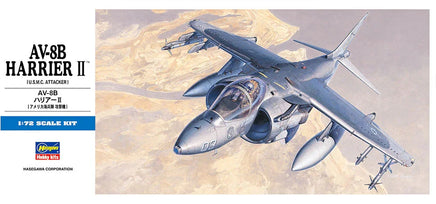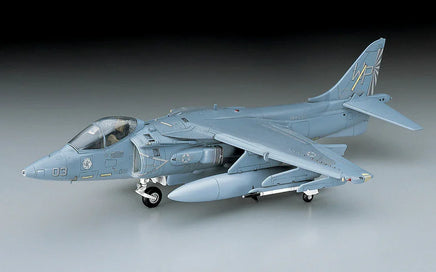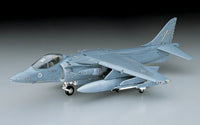The Harrier, which appeared in the early 1960s as the world's first practical V/STOL attack aircraft, caught the attention of the United States Marine Corps as a landing support fighter and was adopted under the designation AV-8A.
However, operational issues due to insufficient payload and range persisted, and there was a long-standing need for an improved version of the AV-8A. The AV-8B, which appeared under these circumstances, was a significant upgrade to meet the tactical requirements of the US Marine Corps.
The wings were enlarged, the cross section became a supercritical airfoil, and LERX (leading edge extension) was added to the root of the wings to improve aerodynamics. Moreover, the weight was kept to a minimum by extensive use of composite materials, and the auxiliary wheels under the wings were moved from the wing tips to the center of the wings, and two underwing hard points were added. Meanwhile, the avionics were also significantly modernized, and the nose was equipped with ARBS (Angular Velocity Bombing System) which was put into practical use in the A-4M Skyhawk, which dramatically improved the accuracy of weapon dropping. Furthermore, in addition to adopting a multi-purpose display and HOTAS system (which allows the pilot to operate various systems without taking their hands off the joystick or throttle ), the canopy was enlarged, providing a wider field of view and improving maneuverability.
In addition, the thrust efficiency has been improved by improving the air intake and
adopting a zero scarf nozzle for the front exhaust nozzle, and the lift improvement devices (LIDS...Lift Improvement Devices), which are a newly installed retractable forward fence and a larger conventional removable strake, make it possible to effectively use the ground reflected jet lift during VTOL. In addition, the airborne refueling device is equipped with a retractable refueling probe. The first deployment to combat units was made to VMA-331 in 1985.
- Crew: 1
- Width: 9.25m
- Length: 14.12m
- Height: 3.56m
- Engine: Pegasus RR F-402-RR-408 x 1 (thrust 10,795kg x 1)
- Maximum takeoff weight: 14,515kg (STOL)
- Maximum speed: 1,080km/h
- First flight: September 6, 1978 (original model)




